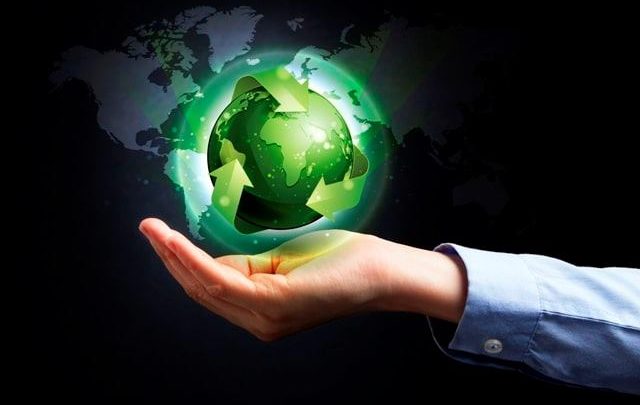“Loss and Damage” Fund…Does it enhance the trend towards climate justice

Prepared by the researcher: Dr. Rana Al-Sayed Abdel Latif – researcher interested in political affairs and climate change
Democratic Arabic Center
The twenty-seventh session of the Conference of the States Parties to the United Nations Framework Convention on Climate Change (COP27), which was held in Sharm El-Sheikh from 6 to 19 November 2022, concluded its negotiations by agreeing to establish a “Loss and Damage” Fund, to help “the countries most affected” by climate change. , to bear the increasing costs of the resulting damages, as an attempt to overcome thirty years of rejection by developed countries that contribute most of global emissions. Accordingly, a committee was formed to work on developing a mechanism to follow up on the details regarding how the Fund works and its funding sources, in order to approve it during the next Conference of the Parties (COP28) in the UAE by the end of 2023.
A few weeks before the climate summit (COP27) was held, there were repeated demands by developing countries to include the “losses and damages” item on the conference agenda, which actually happened during the procedural session of the conference held on November 6, 2022, with Egypt putting forward a proposal to include the “losses item.” “Harms” is on the agenda, which is related to financing the damages resulting from climate change in developing countries. This is the first time that the issue has been included on the agenda of climate conferences. This is to address the losses, damages and compensation provided by developed countries to developing countries that are more affected by the risks of climate change and that did not contribute significantly to the harmful emissions that led to a rise in the Earth’s temperature.
Controversy over the establishment of the “Loss and Damage” Fund
The idea of a “loss and damage” fund was first proposed in 1991, and that was based on the proposal of the state of Vanuatu, a low-lying island state in the Pacific Ocean, by establishing a fund to compensate and assist developing countries as a result of climate change, but this proposal remained rejected for thirty years. A year on the part of developed countries, and there was a state of rejection on the part of the United States and the European Union. For fear of entering into a spiral of financial obligations, the European Union retracted its position at COP27 and supported the establishment of the fund under specific conditions, including that China contribute to it, which the United Nations classifies as a developing country, but it is also the second largest economy in the world.
During the conference, some countries made relatively limited financing commitments for losses and damages, namely (Denmark, Belgium, Germany, and Scotland), in addition to the European Union. China did not pledge any payments. Moreover, financing assistance was provided by the United Nations and the Development Bank to address the losses and damages. . During the agreement to establish the fund, there was a state of controversy over some issues, which are:
- Identifying the countries that will benefit from the fund: During the agreement to establish the fund, there was a lot of controversy about the countries that would benefit from it. The European Union wants most of the money to go to “particularly vulnerable” countries rather than developing countries, which under the United Nations climate agreement specifically includes non-poor places such as (China and Singapore), in addition to the European Union’s indication that China is the largest exporter of energy. of greenhouse gas emissions in the world.
- Funding sources: During the conference, there was a state of controversy over the request of developing countries to increase the financial aid provided by developed countries beyond $100 billion, which was confirmed by the President of Kenya, William Ruto, who said that the failure of the rich world to spend $100 billion annually in climate financing What he promised at the Copenhagen climate summit in 2009 amounted to an “unjustified default” (it never reached more than $83 billion in any single year).
After it was agreed to establish the fund, the source of funding was not officially determined, but it is expected that the source of funding for the fund will be financial institutions, instead of relying on developed countries, with some countries suggesting that there are other existing funds as a source of cash. The Secretary-General of the United Nations, Antonio Guterres, also put forward some ideas, such as imposing a tax on the exceptional profits of fossil fuel companies, but during the next year a final agreement will be made on the mechanism of the Fund’s work and the sources of funding will be determined, which will be discussed at (COP28).
During the final “extra” day, the conference also called on multilateral development banks and other international financial institutions to reform their practices and determine their priorities, and encouraged them to define a new vision by putting forward appropriate channels and tools to appropriately address the global climate emergency. But geopolitical tensions and the preceding effects resulting from the Covid-19 virus led to a struggle over money in developed countries, while in developing countries, the economic and social conditions are much worse. As a result of high inflation rates, in addition to the losses and damages resulting from climate change, the debt rates of many developing countries have increased to implement green projects that contribute to reducing the effects of these changes.
- Losses and damages covered by the Fund: As a result of climate change, huge losses have occurred in the countries of the Middle East and Central Asia, and the countries that suffer most from high temperatures and extreme weather events are the poor countries affected by conflicts. According to an International Monetary Fund report, climate disasters have claimed the lives of more than 2,600 people, affected the lives of more than 7 million others, and caused $2 billion in direct material damage every year starting in 2000.
In addition, climate disasters in these regions have reduced annual economic growth by 1-2 percentage points on a per capita basis, and these climate events are expected to become more common and severe as the planet warms. Combined climate-related losses over the past two decades have been estimated at $525 billion, or 20% of GDP, and some research suggests that by 2030 these losses could reach $580 billion annually.
There are many countries with harsh climatic conditions. Global warming is exacerbating desertification, water stress and rising sea levels. Precipitation has become more erratic, and climate disasters such as droughts and floods are more severe. In Tunisia, 90% of tourism activity is concentrated on beaches threatened by erosion and vulnerable to further rises in sea levels. In Iran, last year’s drought ignited protests as water shortages forced farmers out of work, and in conflict-affected countries such as Afghanistan, Somalia and Sudan. Likewise, Pakistan, where the suffering was severe, where climate disasters claimed the lives of or harmed even greater numbers.
In conclusion, although during the COP27 agreement it was not defined what should be considered “losses and damages” resulting from climate change, which could include damaged infrastructure and properties, as well as natural ecosystems or cultural assets that are difficult to assess; The inclusion of the item of losses and damages for the first time on the summit’s agenda, and the agreement to establish a loss and damage fund to help the most affected countries, reflects the strenuous Egyptian effort to push the parties to agree on the one hand, and the continued attempt of developed countries to evade their climate obligations on the other hand.



